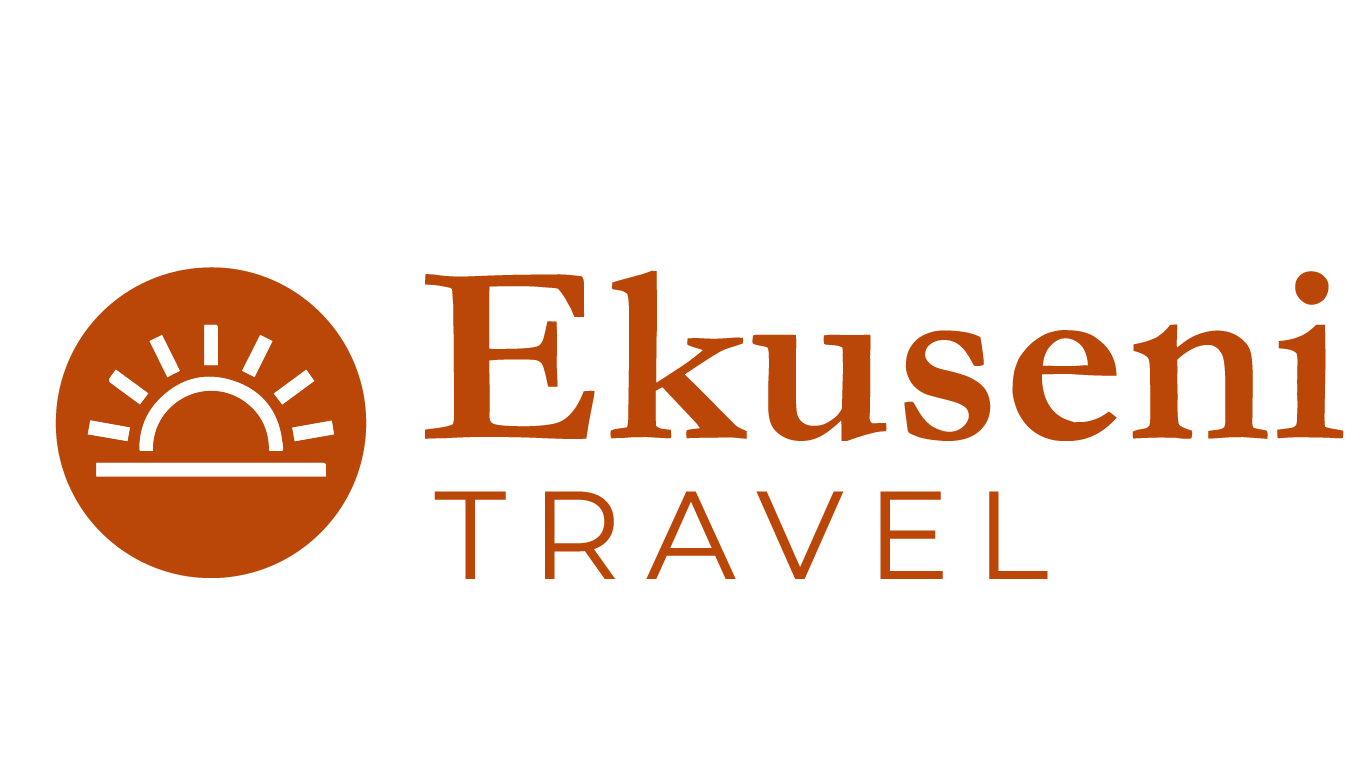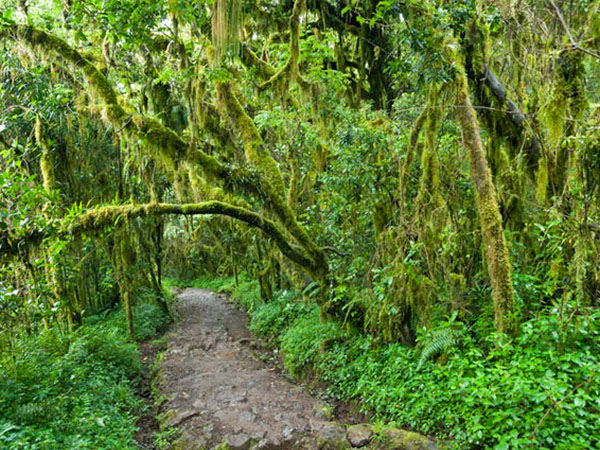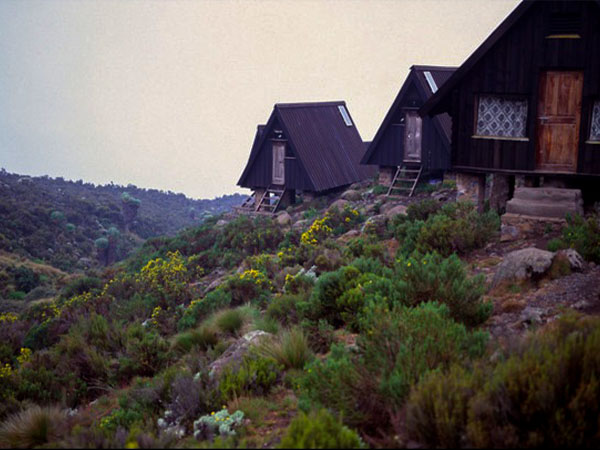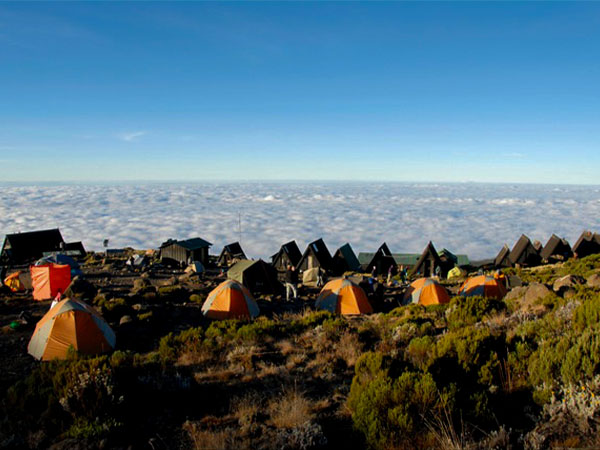6-Day Marangu Climb to Kili’s Summit
Built for Comfort, Not Just the Climb
Customizable Marangu Climb Itinerary
This Is The Only 6-Day Kilimanjaro Climb Itinerary (Marangu Route) Engineered For Maximum Success and Guaranteed Mountain Hut Comfort.
The Harsh Truth About Marangu Route
Look, the Marangu Route is famous, or infamous. It’s the original path, and the only one with the sleeping huts (a huge win for guaranteed shelter and rest). But it gets a bad rap for a lower success rate. Why? Because most companies treat it like a cheap, rushed express lane.
We don’t. We took the shortest, most comfortable route and fixed the only thing that mattered: the acclimatization. We only do it in a 6-day itinerary, which builds in the essential extra night at Horombo Hut to give your body the time it needs to summit confidently.
You don’t just want to reach the top. You want to enjoy the journey, feel taken care of, and summit with confidence. This is where your journey starts feeling less like a military march and more like a challenging, yet wholly supported, adventure with your most capable friends. Let’s get you to the Roof of Africa, the smart way.
Marangu Kilimanjaro Climb, at a Glance
-
Duration: 6 Days, 5 Nights
-
Perfect for: First-time climbers, those seeking non-camping accommodation, and travelers prioritizing comfort and a proven acclimatization schedule.
-
Key Destinations: Mandara Hut, Horombo Hut, Kibo Hut, Uhuru Peak
-
Ekuseni Difference: You get superior logistics and the personal touch of 'visiting a friend,' not just a tour operator.
Trip Highlights
The Comfort Advantage: Sleep in shared but solid mountain huts every night. No tents, less gear to worry about, and a guaranteed place to warm up and dry out.
Success Engineered: Our 6-day schedule includes the non-negotiable acclimatization day at Horombo Hut. This is the professional standard for increasing your summit success rate on this route.
Two Climatic Zones in One Day: Experience the iconic “saddle” crossing between Mawenzi and Kibo, witnessing the dramatic transition from alpine desert to the arctic zone.
Personalized Pace & Support: Our expert local guides treat you like family, ensuring your pace is your pace. This is your personal summit attempt, backed by Ekuseni’s flexible, high-quality logistics.

6-Day Marangu Climb, Itinerary
A Note on Your Schedule and Flexibility
This itinerary focuses exclusively on the 6 climbing days on Mount Kilimanjaro. To ensure the highest chance of success and to honor your health, we strongly encourage all our guests to plan for a full rest day before the trek begins and a full recovery day after the descent. This flexibility allows you to acclimatize to local conditions before exerting yourself and ensures a relaxed departure from Tanzania.
Day 1: Marangu Gate to Mandara Hut
Today we transfer from Moshi to Marangu Gate (1,860m). After registering, the climb begins through the beautiful, lush rainforest. The trail is well-maintained, and you’ll ascend at a steady, manageable pace. Keep an eye out for Colobus monkeys! You’ll arrive at Mandara Hut (2,700m), where you’ll enjoy a hearty dinner and the guaranteed comfort of the mountain huts.
Day 2: Mandara Hut to Horombo Hut
We leave the forest behind and enter the heath and moorland zone, famous for its otherworldly giant lobelias and groundsels. The path is challenging but rewarding, offering you your first dramatic views of the Kibo and Mawenzi peaks (Kilimanjaro’s two highest cones). You’ll arrive at the bustling Horombo Hut (3,720m) with amazing panoramic views of the plains below. This is your high-altitude home for the next two nights.
Day 3: Acclimatization Day at Horombo Hut
This is the most important day for maximizing your summit chances. We don’t just rest; we execute a critical “Climb High, Sleep Low” strategy. Your guide will lead an acclimatization hike up the Mawenzi Ridge to the famous Zebra Rocks (approx. 4,020m), giving you a solid altitude boost. We then return to the lower elevation of Horombo Hut (3,720m) for lunch and a full afternoon of rest, reading, and preparation. This day is your investment in Uhuru Peak.
Day 4: Horombo Hut to Kibo Hut
Today, the landscape shifts dramatically as you trek into the desolate, high-altitude alpine desert—the vast ‘Saddle’ connecting Mawenzi and Kibo. The terrain becomes rockier, and the air thinner. The goal is to reach Kibo Hut (4,700m) early in the afternoon. Once there, your primary job is to hydrate, eat the crucial ‘last supper,’ and get to bed immediately. Tonight, we climb.
Day 5: Summit Day: Kibo Hut to Uhuru Peak to Horombo Hut
You’ll be woken before midnight for the final, most demanding push. We follow the famous zig-zag trail up to Gilman’s Point (5,685m) on the crater rim, aiming to catch the unforgettable African sunrise. From there, it’s a shorter, stunning trek past Stella Point to Uhuru Peak (5,895m)—the very top. After celebrating, the descent is swift and exhilarating back to Kibo Hut for a short rest, and then on to the welcoming comfort of Horombo Hut (3,720m) for a well-deserved sleep.
Day 6:Horombo Hut to Marangu Gate & Transfer to Moshi
The last day is a long, rewarding downhill trek, descending back through the moorland and finally into the warm rainforest. At Marangu Gate, you’ll sign out and receive your official summit certificates (Green for Gilman’s, Gold for Uhuru!). Our vehicle will be waiting to transfer you back to your hotel in Moshi for a celebratory dinner and that long-awaited hot shower.
What's Included and Excluded?
Transparency is key to a smooth journey. Here is a clear breakdown of what is covered in your Marangu Climb arranged by Ekuseni:
Price Includes
Accommodation: Two nights of quality hotel accommodation in Moshi (Day 1 & Day 7) before and after the climb, including daily breakfast. Five nights of accommodation in the designated mountain huts (Mandara, Horombo, Kibo).
Park Fees: All required Kilimanjaro National Park entrance fees, conservation fees, hut fees, and mandatory Tanzanian government taxes.
Transfers: Private, high-quality ROAD transfers between Moshi/hotel and Marangu Gate (round trip). Private airport transfers from/to Kilimanjaro International Airport (JRO).
Guide and Crew: Services of a professional, highly experienced, English-speaking Ekuseni Mountain Guide, Assistant Guides, a dedicated cook, and sufficient, well-compensated porters. Our guide-to-climber ratio is optimized for safety and personal attention.
Food and Water: Three nutritious, high-calorie meals per day on the mountain, designed to fuel your ascent. All drinking water on the mountain is treated/boiled.
Safety & Medical: Comprehensive emergency equipment, including pulse oximeters for regular monitoring, first aid kits, and immediate emergency contact procedures.
Price Excludes
Flights: International flights to and from Kilimanjaro International Airport (JRO).
Tips (Gratuities): Tips for the mountain crew (Guides, Porters, Cook). Tipping is a standard and essential practice to recognize their hard work and dedication.
Personal Gear: High-altitude gear (e.g., down jacket, heavy sleeping bag, trekking poles) can be rented locally if needed, but is not included in the package price.
Travel Documents: Visa fees, travel insurance (mandatory, including helicopter evacuation coverage), and personal medical expenses.
Meals off the Mountain: Lunch and dinner on your arrival and departure days (Day 1 & Day 8) while at the hotel.
Drinks on Mountain: Bottled water, soft drinks, or beer sold at the Mandara and Horombo huts.
Ready to Summit? Start Planning Your Climb Now
Use this form to tell us about your group, preferred travel dates, and any specific questions you have about gear or our high summit success rate.
This is not a commitment to book. This is simply the fastest way to connect with your Ekuseni friend and receive a personalized quote and detailed information pack tailored specifically to your Marangu climb.
Common Questions, Expert Answers
Why Choose the 6-Day Marangu Route over the 5-Day Option?
The 5-day route is rushed and notorious for low success rates because it skips the necessary acclimatization. The 6-Day Marangu Route includes a non-negotiable extra day at Horombo Hut (Day 4). This time allows your body to adjust to the altitude, scientifically boosting your summit success rate by 15-20%. We never compromise on safety for a rushed schedule.
Is the Marangu Route Really the Easiest Route?
The Marangu Route is often called the “easiest” because it has the most gradual slope on its lower sections and uses comfortable huts instead of tents. However, the short timeframe and the tough summit night make it physically and mentally challenging. No Kilimanjaro route is easy. Our 6-day schedule makes it the smartest choice for those prioritizing fixed shelter and a manageable daily pace.
What are the Hut Accommodations Like?
The Marangu Route is unique for its A-frame, dormitory-style huts. They offer communal shelter, bunk beds with foam mattresses, and a dining hall. Mandara and Horombo huts have running water and flush toilets (though basic). Kibo Hut is very basic, with simple latrines and no running water.
How Difficult is Summit Night from Kibo Hut?
Summit night is universally considered the most challenging part of the climb. You begin trekking around midnight in extreme cold (temperatures can drop below -15C. The 1,195-meter vertical ascent to Uhuru Peak is demanding, done on steep volcanic scree and possibly ice. Our acclimatization day helps, but preparation, mental grit, and following your guide’s slow Pole Pole pace are essential.
Do I Need Prior Mountaineering Experience?
No, prior mountaineering experience is not required. Kilimanjaro is a trekking peak, not a technical climb. However, you must have a high level of aerobic fitness, endurance, and comfort with multi-day hiking. We highly recommend consistent training (long walks, stair climbing) for at least three months prior.
What if I Experience Altitude Sickness?
Altitude sickness is the main challenge. Our guides are trained to monitor your vitals closely and are experts in altitude management. Mild symptoms (headache, nausea) are common. In the event of severe symptoms (HAPE/HACE), the Marangu Route’s swift descent allows for a quick evacuation to a lower, safer altitude. Your safety is our absolute priority, and we carry oxygen for emergencies.
Can I Climb the Marangu Route Solo, or is it Group-Only?
We welcome solo travelers! We can either arrange a private climb tailored just for you (offering maximum flexibility).
What is the Best Time of Year to Climb Marangu?
The best times are the warm and dry seasons: January to March and June to October. Visibility is excellent, and trails are firmer. We avoid the heavy rainy seasons of April, May, and November, though the huts on Marangu make it a viable, sheltered option even during the less ideal “shoulder” seasons.
Can I Store Extra Luggage While I’m on the Mountain?
Absolutely. You can leave any luggage not needed for the climb (travel clothes, extra Safari gear, etc.) securely at your hotel in Moshi. We will ensure it is safely stored until you return from the mountain.
Why is the Marangu Route often considered to have a lower success rate compared to routes like Machame or Lemosho?
The Marangu Route’s lower success rate is primarily due to its acclimatization profile. It’s the most direct route up and down, and the 5-day version rushes the ascent, which greatly increases the risk of altitude sickness.
Other routes, like Machame and Lemosho, are longer (7 or 8 days) and utilize a “climb high, sleep low” strategy. This means you hike to a higher altitude during the day and then descend a bit to sleep, giving your body optimal time to adapt to the thin air. Marangu, while offering the comfort of sleeping in huts, does not naturally facilitate this superior acclimatization profile. This is why choosing the longer, 6-day Marangu itinerary is essential for a safe and successful climb.









